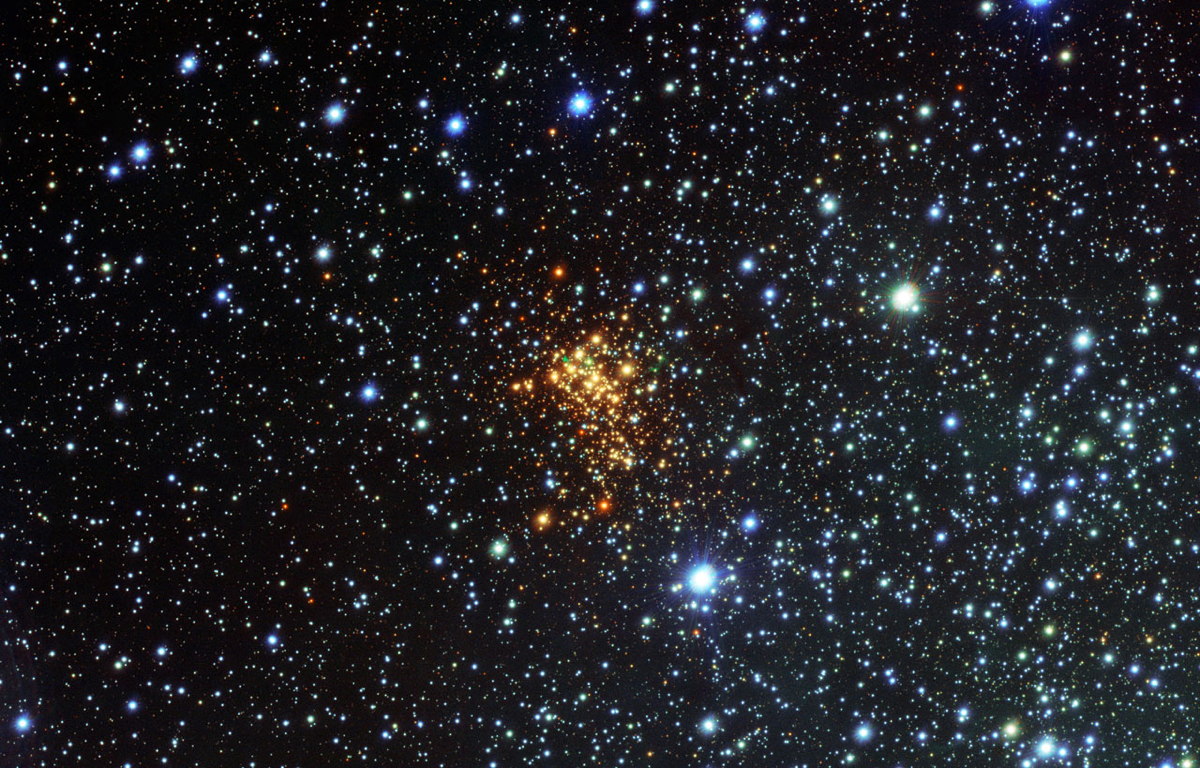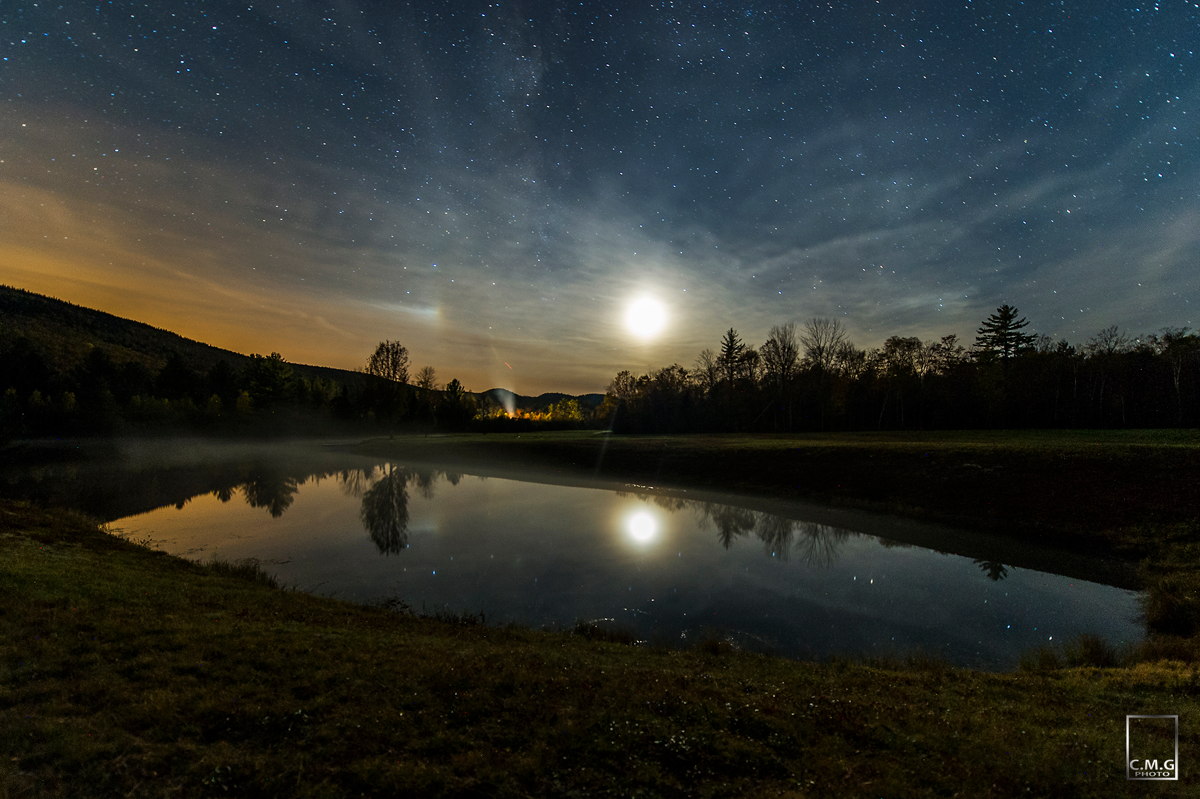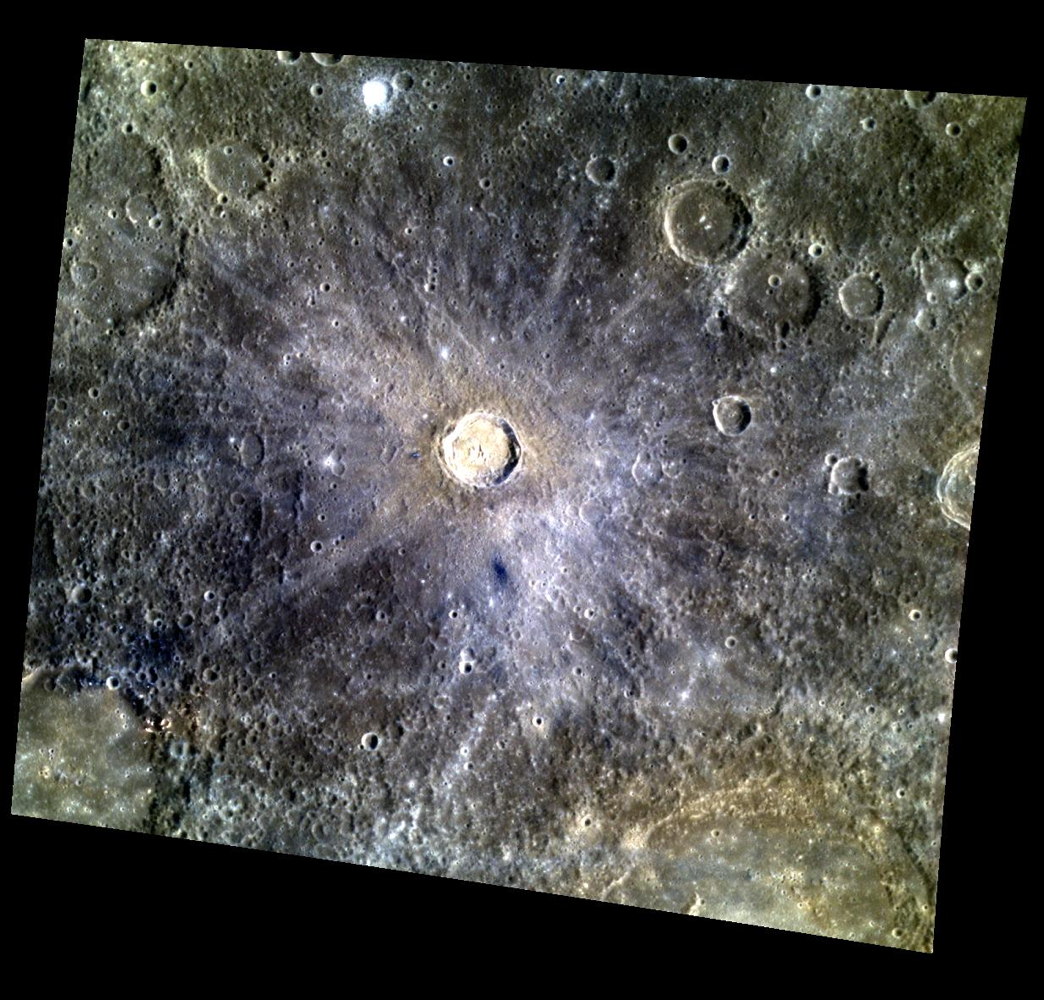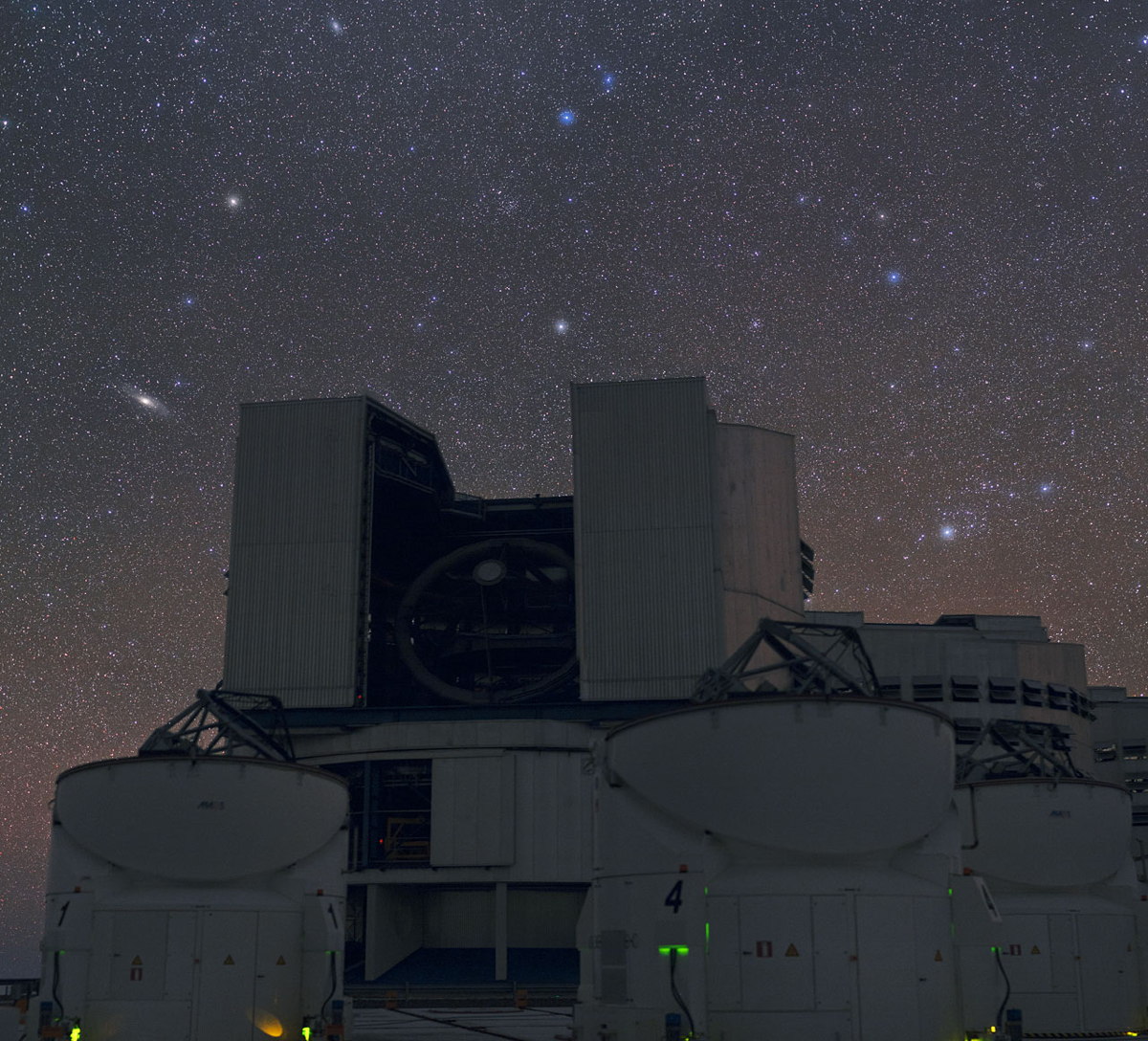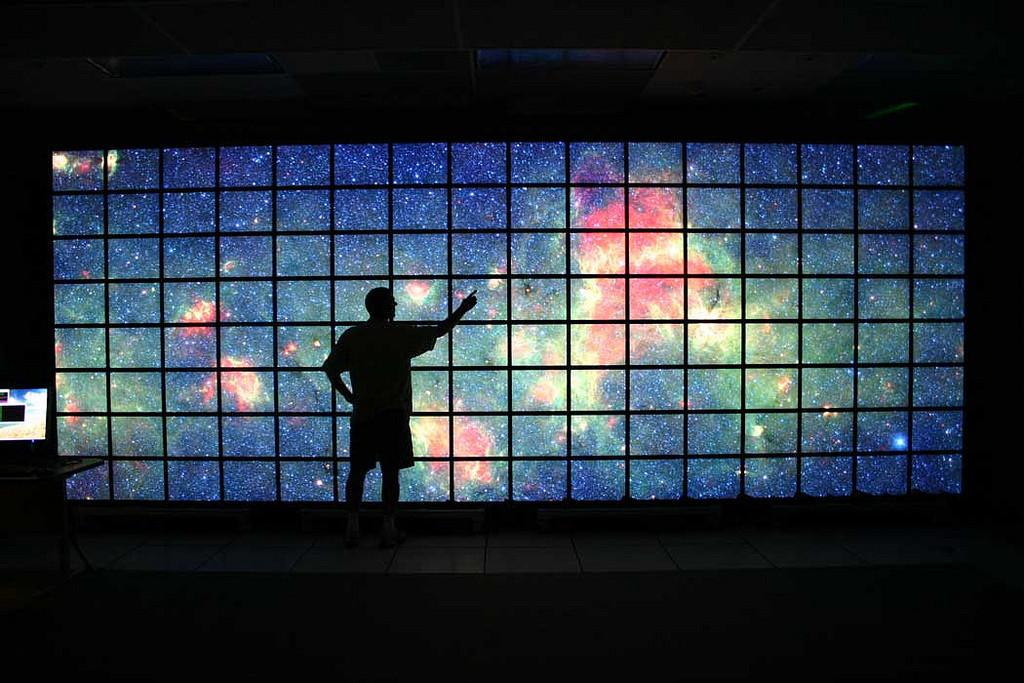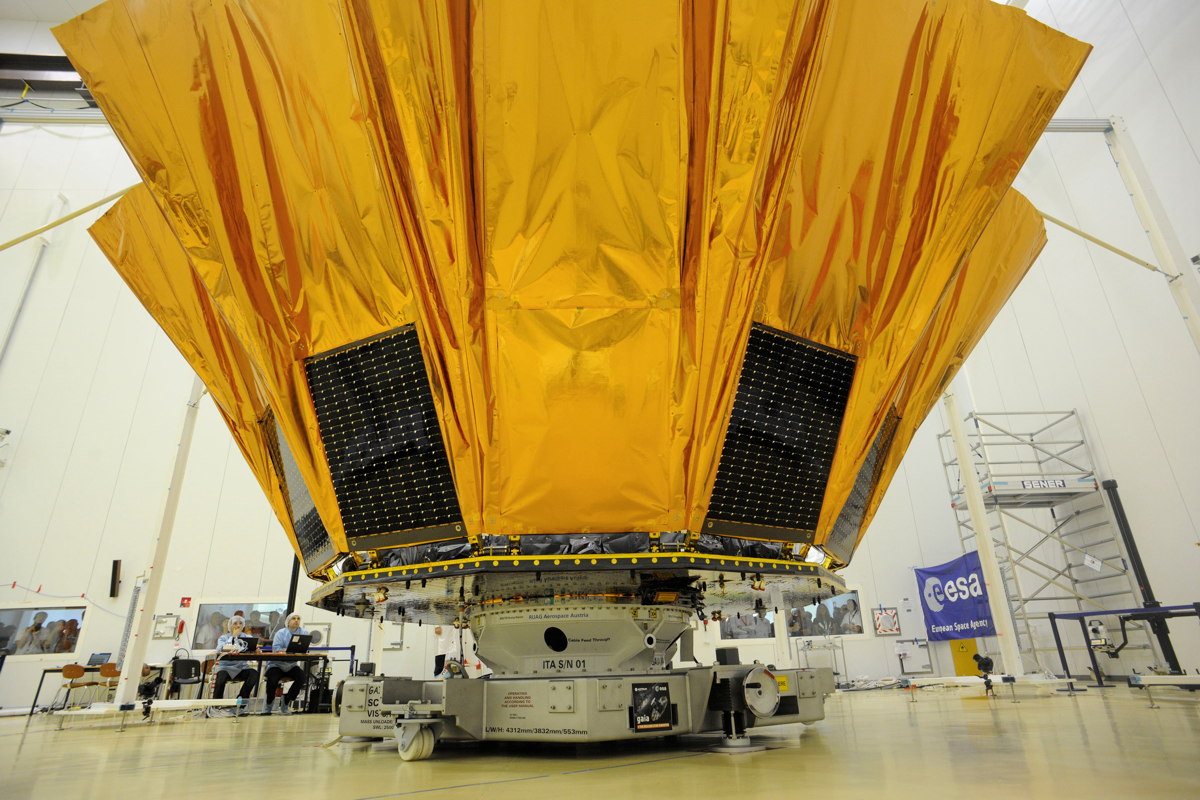Space Image of the Day Gallery (October 2013)
Mighty Clouds of Joy
Tuesday, Oct. 15, 2013: Super star cluster Westerlund 1 glows in a new picture from the VLT Survey Telescope at ESO's Paranal Observatory. This extremely bright cluster lies about 16,000 light-years from Earth in the southern constellation of Ara (The Altar). The cluster emcompasses hundreds of very massive and brilliant stars, all very young, just a few million years old. Our view of this cluster struggles with gas and dust preventing most of the visible light from the cluster's stars from arriving at Earth.
Astronomers discovered something unexpected in this cluster. One of the stars — known as W26, a red supergiant (possibly the biggest star known) — features clouds of surrounding glowing hydrogen gas, shown as green features in the new image. These clouds represent the first ionized nebula discovered around such a star. W26 itself doesn’t possess enough heat to make the gas glow. The ionizing radiation may either come from hot blue stars in the cluster, or possibly a fainter, but hotter, companion star to W26.
— Tom Chao
Howling at the Moon
Wednesday, Oct. 16, 2013: Astrophotographer Christopher Georgia sent in a photo of a single moon dog in the sky taken on Oct. 9, 2013. He writes in an e-mail message to SPACE.com: “Have you ever witnessed a moon dog before? A moon dog or a ‘paraselene’ is a rare phenomena formed in a similar fashion to a moon halo. Bright moonlight refracting through hexagonal ice crystals in high atmospheric clouds, particularly cirrus and cirrostratus clouds, form these halos and moon dog(s). They generally form at 22 degrees around the moon. This image was pulled from a static time lapse as the moon set over a pond in Thornton, New Hampshire … “
— Tom Chao
Galaxy
Thursday, Oct. 17, 2013: NGC 7723 is a barred spiral galaxy that lies in the constellation of Aquarius. It has an apparent magnitude of 11. Adam Block of the Mount Lemmon SkyCenter (University of Arizona) created the image in September 2013.
— Tom Chao
Fresh
Friday, Oct. 18, 2013: Tansen crater represents one of Mercury's smaller named craters at just 17 miles (27 km) in diameter. The ejecta rays formed by the impact appear prominently in this color mosaic, as does the fresh crater ejecta deposit at the top of the image. MESSENGER spacecraft acquired this image as a targeted high-resolution 11-color image set. Acquiring 11-color targets began recently, in March 2013, and the campaign utilizes all of the Wide Angle Camera’s 11 narrow-band color filters. Researchers can only target features of special scientific interest for imaging in all 11 colors, owing to the large data volume involved. The crater was first seen by the Mariner 10 spacecraft in 1974, but has not been featured on MESSENGER's gallery until now. (The image was obtained on Sept. 9, 2013, but owing to the partial government shutdown it did not appear on NASA’s website until Oct. 17, 2013.)
— Tom Chao
The Best and the Rest of Vesta
Monday, Oct. 21, 2013: This mosaic synthesizes some of the best views the DAWN spacecraft possessed of the giant asteroid Vesta. Right now, NASA’s DAWN spacecraft continues travelling to its next destination, dwarf planet Ceres, but the spacecraft studied Vesta from from July 2011 to September 2012. A towering mountain at the south pole, more than twice the height of Mount Everest, stands visible at the bottom of the image. The three craters known as the "snowman" lie at the top left of the asteroid. These images represent the last in Dawn's Image of the Day series during the cruise to Dawn's second destination, Ceres.
— Tom Chao
It All Looks Fine to the Naked Eye
Tuesday, Oct. 22, 2013: Beneath a starry southern hemisphere sky stands one of the four Unit Telescopes of the Very Large Telescope on Cerro Paranal in the Atacama Desert of Chile. At the left side of the image, at about the level of the top of the telescope, shines Messier 31, or the Andromeda Galaxy, visible as a bright smudge. Up and to the right of Messier 31, the bright star Beta Andromedae (Mirach) glistens. Following the line created by the star and the galaxy leads to Messier 33 galaxy, almost at the top frame line. Messier 31 and Messier 33 may have interacted in the past, forming a bridge of hydrogen gas spanning the gap between them.
— Tom Chao
Glow World
Wednesday, Oct. 23, 2013: Auroramax automated camera photographed this auroral display in Canada's Northwest Territory on Oct. 7, 2013. For more information about auroras, see our aurora reference page and our aurora infographic.
— Tom Chao
Breaking space news, the latest updates on rocket launches, skywatching events and more!
How Many Pixels in the Milky Way?
Thursday, Oct. 24, 2013: A giant screen in NASA's Ames Research Center at Moffett Field, CA, displays the center of the Milky Way galaxy (our home) as imaged by Spitzer Space Telescope. The high definition LCD science visualization screen stretches 23 feet (7 meters) in width and contains a quarter of a billion pixels. [See our Spitzer Space Telescope image gallery.]
— Tom Chao
The Shield
Friday, Oct. 25, 2013: Gaia spacecraft’s Deployable Sunshield Assembly (DSA) underwent deployment testing in the S1B integration building at Europe's spaceport in Kourou, French Guiana, on Oct. 10, 2013. The shield has two purposes: to shade Gaia’s telescopes and cameras, and to provide power. Gaia spacecraft represents ESA’s billion-star surveyor, designed to provide a precise 3D map of the Milky Way galaxy in order to understand its composition, formation and evolution. The previously scheduled launch date for Gaia has been pushed back from Nov. 20, 2013, to the next available launch window from Dec. 17 to January 5, 2014.
— Tom Chao
Mad Solar
Monday, Oct. 28, 2013: A magnetic filament of solar material erupted on the sun in late September 2013. The 200,000 mile long (322,000 kilometers) filament tore the sun's atmosphere, the corona, marking it with something appearing like a canyon of fire. The canyon outlines the channel where magnetic fields held the filament up before the violent outburst. The sun does not consist of fire, but actually contains plasma, a gas-like substance of charged particles that interacts with magnetic fields. This image were captured on Sept. 29-30, 2013, by NASA's Solar Dynamics Observatory.
— Tom Chao
